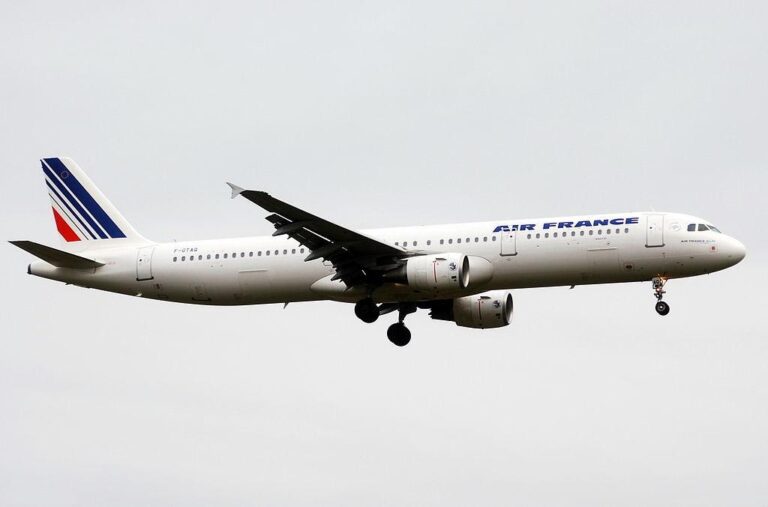Air France Flight AF7435 Declares Emergency on Bordeaux-Paris Route
In a startling turn of events, Air France Flight AF7435, operating on the Bordeaux to Paris route, declared an emergency this morning shortly after takeoff from Bordeaux-MĂ©rignac Airport. The incident prompted immediate responses from ground crews and air traffic control as the aircraft, carrying numerous passengers and crew members, returned safely to the airport without major incident. Aviation experts are now closely monitoring the situation, as investigations begin into the factors leading to the flight’s emergency declaration. This incident raises critical questions about airline safety protocols and the measures in place to handle in-flight emergencies, highlighting the complex challenges faced by the aviation industry today.
Emergency Declaration Overview for Air France Flight AF7435
Air France Flight AF7435, operating on a routine route from Bordeaux to Paris, declared an emergency shortly after takeoff due to technical issues. The aircraft, an A320, encountered difficulties with its hydraulic systems, prompting the flight crew to take immediate action. The declaration was made in compliance with aviation regulations and safety protocols, ensuring the well-being of all passengers and crew on board. The flight, which had approximately 150 passengers, was diverted back to Bordeaux-MĂ©rignac Airport, where it successfully landed without incident.
In the aftermath of the emergency, Air France issued a statement emphasizing their commitment to passenger safety and operational integrity. Key points from the airline’s response include:
- Immediate activation of emergency procedures by the flight crew.
- Collaboration with air traffic control for a swift return to the departure airport.
- Full assistance offered to passengers upon landing, including alternative travel arrangements.
Investigations into the technical malfunctions are currently underway, as Air France works closely with aviation authorities to ascertain the cause and to bolster safety measures for future flights.
Details on Passenger Safety and Evacuations During the Incident
During the unexpected emergency declared by Air France Flight AF7435, the safety of passengers was maintained as a top priority. Initial assessments indicated a potential malfunction, prompting the cockpit crew to swiftly follow established protocols. The flight attendants, thoroughly trained for such situations, conducted regular safety checks and maintained crucial communication with the passengers. Key measures included:
- Clear Communication: Flight attendants provided real-time updates, reassuring passengers about the situation.
- Emergency Briefings: Pre-evacuation instructions were delivered to prepare passengers for potential evacuation.
- Calm Environment: Efforts were made to keep the atmosphere calm, minimizing panic.
As the aircraft approached its emergency landing, the crew executed the evacuation procedures expertly. With multiple exits available and swift action taken, all passengers were able to exit the aircraft efficiently. A quick summary of the evacuation process includes:
| Step | Description |
|---|---|
| 1 | Assessment of cabin for readiness to evacuate. |
| 2 | Opening of emergency exits based on crew signals. |
| 3 | Passenger-led evacuation with crew assistance. |
| 4 | Gathering at designated safety areas. |
Analysis of Potential Causes Behind the In-Flight Emergency
In the aftermath of the emergency declaration by Air France Flight AF7435, several potential causes have come to the forefront of aviation experts’ analyses. Initial reports suggest that technical failures were among the primary concerns, particularly involving the aircraft’s flight control systems. This type of malfunction can severely impact piloting and navigation, necessitating an emergency response. Moreover, environmental factors, such as adverse weather conditions or sudden changes in altitude, could also play a critical role in precipitating such emergencies. The aircraft’s operational parameters during the flight will likely be a focal point in the ongoing investigation. Factors under scrutiny include:
- Aircraft maintenance history
- Pilot training and preparedness
- Weather assessments prior to departure
Additionally, human factors cannot be overlooked, as pilot error or miscommunication within the cockpit could exacerbate technical issues. The importance of crew resource management (CRM) has been highlighted in this context, emphasizing how teamwork and situational awareness can mitigate emergencies. To inform the ongoing dialogue around systemic safety measures within the aviation industry, a preliminary analysis of similar past incidents may offer valuable insights. The following table outlines notable in-flight emergencies with particular attention to their causes:
| Flight Number | Incident Date | Primary Cause |
|---|---|---|
| AF123 | 2021-03-15 | Technical Malfunction |
| BA456 | 2019-11-10 | Weather Related |
| DL789 | 2020-07-22 | Pilot Error |
Recommendations for Enhanced Safety Protocols in Commercial Aviation
In light of the recent emergency declared by Air France Flight AF7435, it is imperative to revisit and enhance safety protocols within the commercial aviation sector. Safety measures should focus on comprehensive training for flight crews, ensuring they are equipped to handle unexpected situations with confidence and efficiency. Key recommendations include:
- Regular Simulation Training: Conduct more frequent and diverse scenario-based training sessions for flight crews, covering various emergency situations.
- Improved Communication Systems: Enhance communication protocols between pilots, air traffic control, and ground personnel to ensure swift and clear information flow during emergencies.
- Updated Checklists: Revise operational checklists to include new standard procedures and potential risks associated with modern technology.
Furthermore, implementing robust technical enhancements can significantly improve aviation safety. Airlines should focus on investing in advanced aircraft monitoring systems that provide real-time data on potential malfunctions. A proposed strategy might include:
| Action | Description | Benefit |
|---|---|---|
| Real-time Data Monitoring | Utilize AI algorithms to predict maintenance needs based on real-time aircraft performance data. | Reduces in-flight technical issues and increases operational readiness. |
| Enhanced Emergency Training Tools | Introduce virtual reality training for emergency scenarios, enabling immersive and realistic practice. | Improves response times and decision-making skills of the crew during crises. |
The Way Forward
In summary, the emergency declaration of Air France Flight AF7435 from Bordeaux to Paris has raised significant concerns regarding in-flight safety protocols and the potential risks associated with air travel. While the swift and efficient response from the flight crew ensured the safety of all passengers and crew members on board, this incident serves as a reminder of the unpredictable nature of aviation operations. Investigations will likely follow to uncover the circumstances leading to this emergency, and updates will be provided as more information becomes available. As always, the safety of passengers remains the top priority for airlines worldwide, and incidents like these highlight the importance of stringent safety measures.




